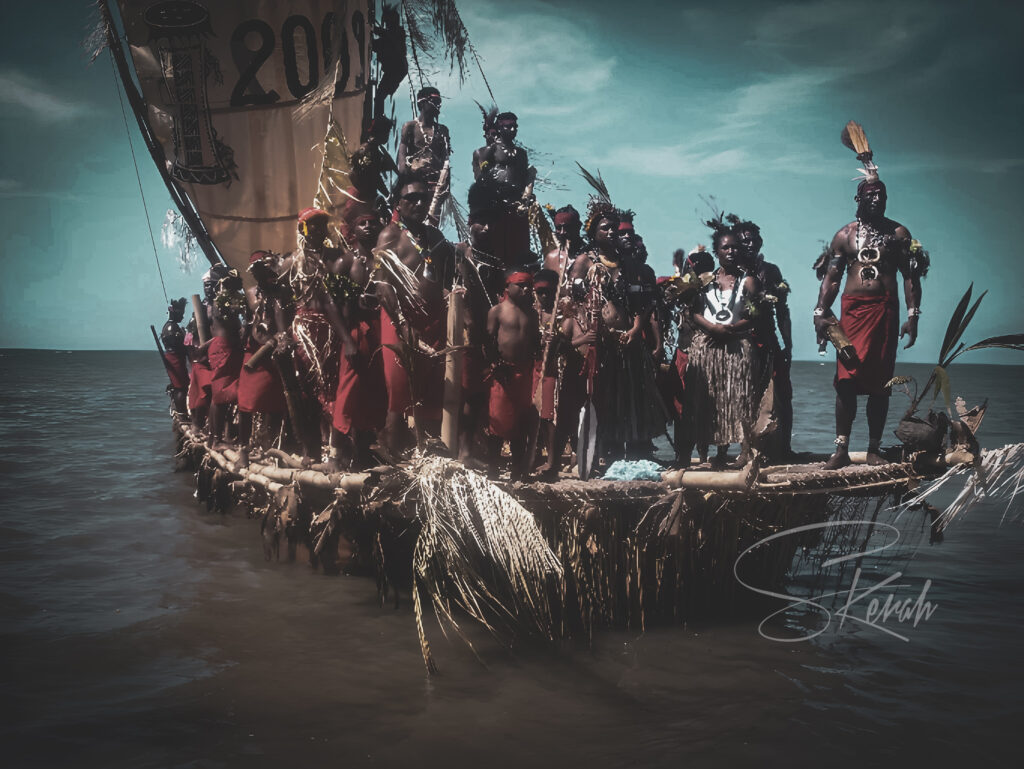The First Lakatoi
The First Lakatoi
- skerah
-
Post Views: 1,129
- No Comments
Since the tale of Edai Siabo of Boera, the first grand Lakatoi built by the Motu people was named Oalabada – after the mighty crocodile. To commemorate its completion, they held a joyous dance accompanied by the sounds of bamboo instruments known as sede. Regular drums were prohibited on the new vessel.
Following the singing of the spiritual song, Lakatoi Ehona, the ship was loaded with pots and set sail towards the west. Edai instructed his wife’s sister to climb the hill of Taubarau every 50 days to keep a lookout for their return. The journey took longer than expected, causing many wives to remarry, assuming their husbands were lost. However, Edai’s faithful wife, Oiooio, patiently waited for her husband’s return, and finally welcomed him back with open arms as he arrived with a cargo of sago on the Lakatoi.
Following the success of Oalabada the people declared that an annual ceremony should be held. This tradition took place during September and October, when the south-east trades were easing, and involved large fleets of lakatois departing from the Motu villages and traveling west to the Gulf’s rivers and estuaries.
They carried a variety of items, such as earthenware pots wrapped in banana leaves and special ornaments, to trade with the Gulf people for sago and other food.
The Hiri was a complex and lengthy affairs. Here’s a summary of the process:
- The Baditauna, an elder secretly decides to organize the hiri.
- He confides in another man, the doritauna, or leader.
- The two sit in front of a house smoking the baubau discussing their intentions.
- Soon after, two mast captains, two sail captains, and their respective crews gather around them.
- The Lakatoi is constructed
- Lakatoi is named after the families of the leaders. The names chosen restricted to three options: Bogebada, Oalabada, and Kevaubada.
The Journey and the Social Customs
As the journey commenced, certain social customs were observed among the leaders.
- They live separately from their spouses.
- No direct communication between spouses.
- Instead, a third party acted as a mediator.
- Both leaders prohibited from washing and the men not allowed to comb their hair.

The Crew
After meticulously preparing the canoes by overhauling, caulking, and lashing them together, the Baditauna and Doritauna carefully selected young boys to accompany them on their voyage.
These boys were:
- Responsible for carrying their masters’ sleeping mats, fiber bags, and personal belongings onto the canoe.
- Assigned a sleeping area and expected to remain on the vessel, only leaving once to help load ceremonial pots.
- Not allowed to consume certain foods, including sago, areca nut, plantains, and specific types of yams and fish.
The completion of the vessel was marked by elaborate ceremonies, including the burning of roots to fumigate the Lakatoi and ensure smooth and swift sailing. The mangrove masts were then erected and the crabclaw-shaped sails, carefully sewn from plaited mats, were hoisted.

[email protected]





